Historical background
In 1954, after the Indochina War, Vietnam found itself divided into two distinct entities. The North, under Hô Chi Minh's communist regime, aspired to reunify the country, while the South, supported by the United States, defended opposing values. This ideological divide gave rise to the Vietnam War, which broke out in 1955 and left a lasting mark on the country's history.
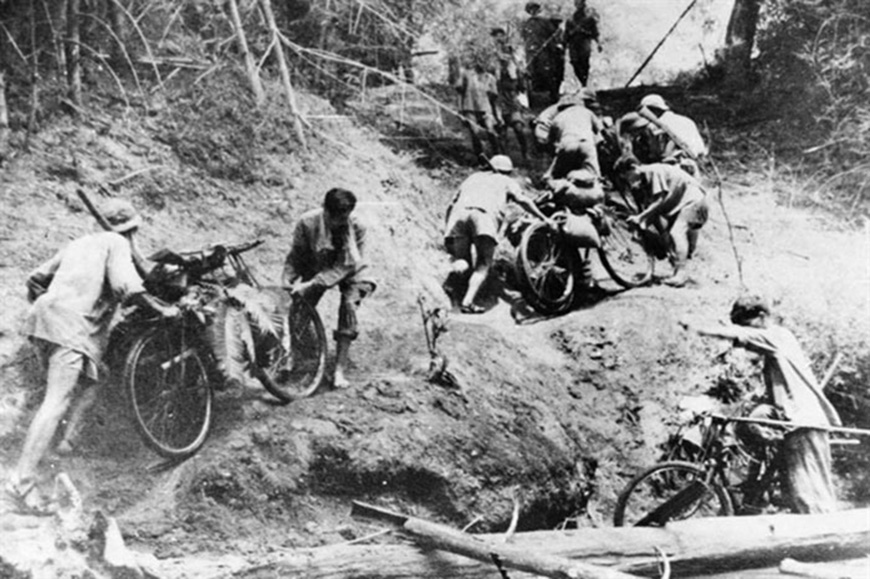
Buiding the Ho Chi Minh Trail - Source : Internet
Birth of the Truong Son Trail
The Hô Chi Minh Trail, or Đường Trường Sơn, was born in 1959 from Hô Chi Minh's desire to support his allies in the South. Đường Trường Sơn takes its name from the Truong Son range, the natural border between Vietnam and two of its neighboring countries: Laos and Cambodia. This complex network of trails and roads, stretching over 2,000 km across Vietnam, Laos and Cambodia, plays a crucial role in the conflict.
A strategic network
Between 1959 and 1975, the Ho Chi Minh Trail enabled the massive flow of resources to the South, making a significant contribution to the North Vietnamese victory and the country's reunification in 1976. This path, often difficult and dangerous, bears witness to the courage and determination of the Vietnamese fighters.
A tour in the footsteps of history
Today, the Ho Chi Minh Trail is a symbol of Vietnamese resistance and determination. It embodies the struggle for independence and has become an important place of remembrance, celebrating its 65th anniversary in 2024.
Did you know? Don't confuse the Ho Chi Minh Trail with the Ho Chi Minh Highway. The latter is a modern highway that crosses the country from north to south, but does not have the same historical role. The Piste, on the other hand, evokes images of courage and sacrifice.Tour: In the footsteps of history.
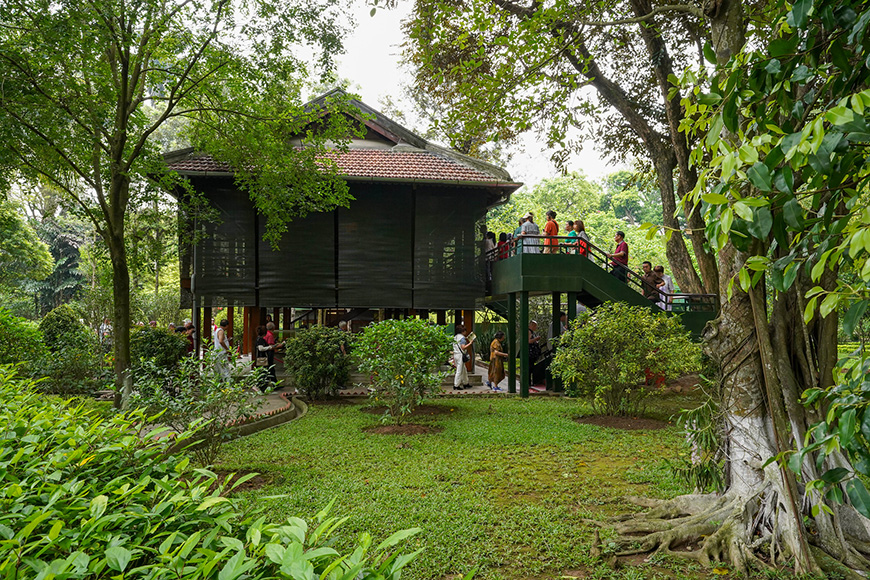
Ho Chi Minh's house on Stilts - Source : Mr Linh's adventures
North Vietnam: the cradle of resistance
Ha Noi
Start your journey in the historic capital. In addition to the must-see sites, don't miss Hô Chi Minh's mausoleum and his house on stilts, a powerful symbol of his heritage.
Pac Bo
Discover Hô Chi Minh's refuge, from where - on his return from exile - he led the revolution. Visit the cave where he lived and worked, and the trails he walked.
Cao Bang
Take a detour to Cao Bang, marvel at the Ban Gioc waterfall and explore the Nguom Ngao cave.
Vinh
The historic starting point of the Trail, this coastal town offers a glimpse of the logistical facilities of the time.
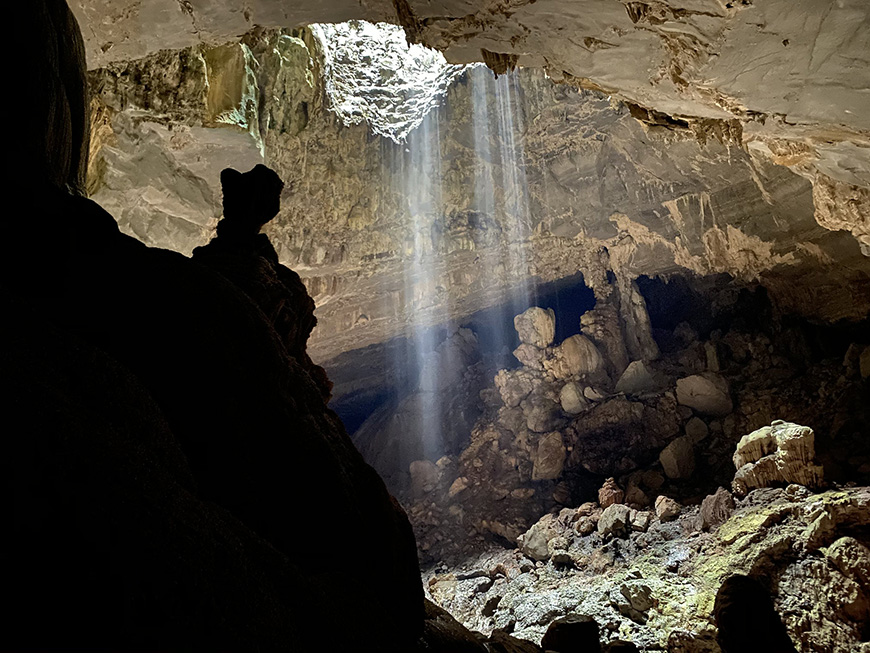
Exploring Paradise Cave, Phong Nha-Ke Bang - Source : Mr Linh's adventures
Central Vietnam: the heart of the Trail
Phong Nha-Ke Bang
At once a safe and discreet shelter, an underground warehouse and a strategic communications axis,
Phong Nha-Ke Bang, with its vast networks of caves and natural tunnels, played a crucial role in the logistical system of the
Ho Chi Minh Trail.
Today, Phong Nha-Kẻ Bàng National Park is recognized by UNESCO for its outstanding natural heritage. Explore this exceptional national park, famous for its gigantic caves.
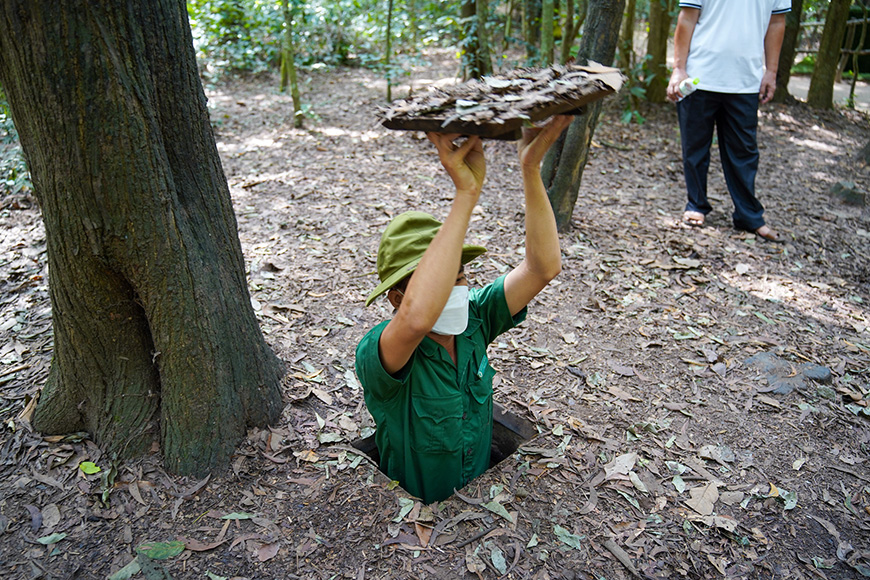
The famous Cu Chi Tunnels - Source : Mr Linh's adventures
Southern Vietnam: arrival
Ho Chi Minh City
Immerse yourself in the tumultuous history of
ancient Saigon with a visit to the Reunification Palace and the War Remnants Museum.
Cu Chi Tunnels
The tunnels of Cu Chi formed a complex underground network, including kilometers of galleries, chambers, hospitals, kitchens and weapons depots. Explore this fascinating underground network, a testament to the ingenuity of the Vietnamese fighters.
Mekong Delta
End your journey with a relaxing cruise through Vietnam's “rice bowl”.
Going further...
Major historical sites along the Ho Chi Minh Trail
Along the Ho Chi Minh Trail, a number of key historical sites bear witness to the importance of this route during the Vietnam War. Here are just a few of the sites not to be missed:
- ✓ Dong Loc crossroads: Located in Ha Tinh province, this crossroads has become a symbol of revolutionary traditions and an important memorial site for younger generations.
- ✓ Tam Co cave: This cave served as a refuge for combatants during the war. It is located in Quang Tri province and is both a historical and natural site.
- ✓ Hai Thuong Lan Ong Memorial Area: This site honors the Vietnamese doctor and national hero, and is a point of interest for those wishing to learn more about Vietnam's medical and military history.
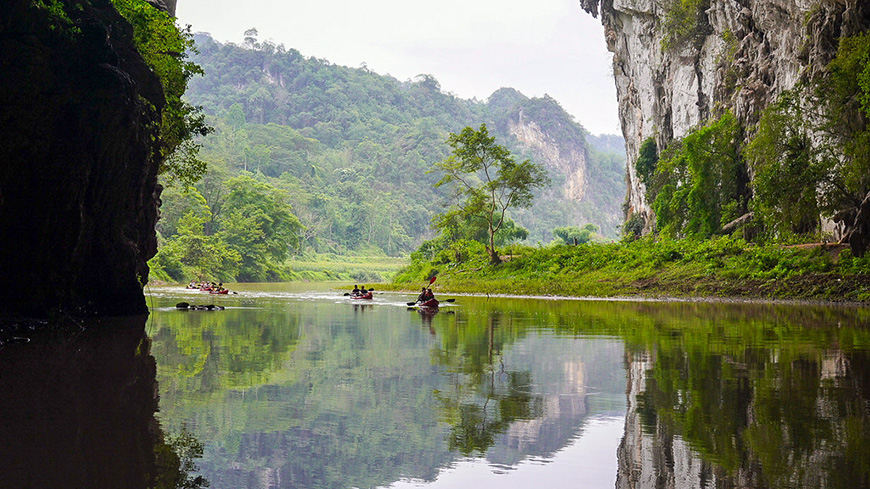
Puong Cave, Ba Be National Park - Source : Mr Linh's adventures
Bushwalking extensions
Away - more or less - from the Ho Chi Minh Trail, there are many spectacular natural sites worth discovering. Here is a selection of the most impressive:
- ✓ Ba Be National Park: This park consists of three interconnected lakes surrounded by mountains and dense forests. It's ideal for boat trips, kayaking and hiking through unspoilt nature.
- ✓ Bach Ma Garden: This garden, located in Bach Ma National Park, is renowned for its biodiversity and hiking trails that lead to breathtaking views of the surrounding mountains and sea.
- ✓ Rice-growing valleys of the Annamite Cordillera: As you travel along the trail, you'll marvel at the landscapes of rice terraces and ethnic villages that dot this mountainous region, offering an immersion in local culture.
Tips for your trip
- ✓ The best months to visit the Hô Chi Minh Trail are generally from November to April.
- November to March: Cool, dry weather, ideal for hiking and sightseeing.
- April: Hot weather, but still pleasant before the onset of the rainy season.
Avoid the months of May to October, as this is the rainy season, with the risk of heavy showers and flooding, especially in the south.
- ✓ Use local guides for an in-depth understanding of history and culture.
- ✓ Take advantage of the many trekking opportunities, particularly in the mountainous northern and central regions.
- ✓ Choose from a wide range of accommodation, from luxury hotels to authentic homestays.
Conclusion
The Ho Chi Minh Trail invites you to travel back in time, following in the footsteps of one of history's most legendary routes. From the wild beauty of the North to the verdant landscapes of the Mekong Delta, the Ho Chi Minh Trail promises an adventure rich in historical and natural discoveries.